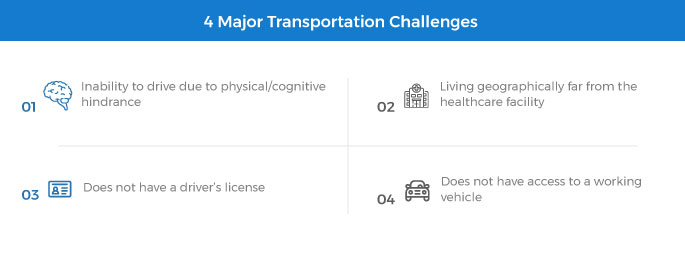6 Strategies to Reduce payments
6 Strategies to Reduce No-show Rates

Blog
6 Strategies to Reduce No-show Rates

While completely eliminating no-shows is near impossible, this article outlines six proven strategies that can help reduce no rates and ensure that your patients receive the care they need, when they need it.
It’s a busy world where people tend to forget about their daily events—and need reminders to keep up with important schedules—from the daily alarm and grocery shopping reminders to personal occasions, office meetings and monthly billing dues. The same goes for healthcare consumers who forget about their doctors’ appointments. The repercussions of missed appointments could, however have a huge impact on practice revenues and efficiencies. In fact, no shows alone cost the U.S healthcare systems a whopping $150b every year.
While completely eliminating no-shows is near impossible, this article outlines six proven strategies that can help reduce no rates and ensure that your patients receive the care they need, when they need it.
Unused time slot in schedule costs a Physician around
Is a no-show rate for a doctor visit in the U.S
Annual cost of missed appointments only in the U.S
An effective automated appointment reminder solution can reduce your no-shows by 90%. Automated appointment reminders are among the best ways to replace manual tasks and reduce no-show rates. Hospitals and practices can leverage AI and automated chatbots to send reminder notifications through patients’ preferred communication channels. You can even integrate the appointment reminder solution with your EHR, to send personalized messages of the date, time and location, based on certain criteria.
Artificial intelligence and machine learning use the massive amounts of data in your EHR to accurately predict no-shows based on patients’ behavioral history on missed appointments and no-shows. A 360-degree view of behavioral insights on patients most likely to skip appointments—allows you to take additional measures to ensure that the patient shows up for the appointment.
Patients’ preferred communication channels differ from person to person—and it’s vital that you give them options to choose from. Find out if they would prefer a phone call or a text message. Giving them several options to further communicate on appointment reschedules or any other follow-ups would reduce the chances of missed appointments.
Patients despite confirming their appointments, will most likely not show up if they have transportation challenges. In fact, research indicates that about 3.6 million people in the U.S face challenges with transportation. Transportation barriers could potentially impact the elderly and the lower income groups.

Healthcare organizations are leveraging technology capabilities and coalitions to minimize transportation challenges and improve care adherence for patients. Partnerships with ridesharing companies like Uber and Lyft allow practices to offer a ride to patients’ appointments—while some AI features may even help you identify which patients are more likely to need a ride.
The entire process can be managed through tech-savvy solutions that leverage EHR, AI and analytics to ensure a seamless patient journey throughout, without the need for any manual intervention.
Scheduling conflicts also lead to patient no-shows, so you may want to consider offering flexible appointment timings after office hours. This might especially be useful for patients with limited time-off or patients with multiple jobs, for whom telemedicine or flexible appointment schedules work best. You can initiate a simple appointment reminder message to confirm if the timeslot still works for them.
You may want to add a reschedule option to improve patients’ convenience to reschedule if they can’t make it at a specific time. Proactive patient outreach to reschedule appointments improves the patient experience by allowing them to find a more workable time—resulting in reduced no-show rates.
Lastly, patients get cold feet at times when they need to visit a doctor. From fear about an upcoming care procedure to a diet or lifestyle change most likely to be required to post an appointment, patients may choose to stay away from experience altogether.
You can reduce no show rates by taking proactive measures to address patients’ health concerns. You can send educational content (video, audio, infographics and text formats) to instill confidence, improve engagement and build lasting patient relationships. And when an uncomfortable screening is scheduled, you can send relevant instructions to help them prepare ahead for what’s coming.
For patients whose native language is not English, integrating personalization strategies to send customized content in their native language goes a long way in reducing patient no-show appointments.
We understand that no-shows can be frustrating for care providers—leading to revenue losses and compromised patient care. That’s why our comprehensive appointment reminder solutions are specifically designed by doctors, PhDs and other domain experts to help care providers reduce no show appointments and improve patient care.
Understanding the reasons for no-shows is the first step to identifying the appropriate solutions to reduce patient no-shows and mitigate financial and clinical impact. Using digital patient engagement solutions and automated appointment reminder platforms go a long way in identifying why patients miss their appointments—allowing you to customize your solutions to best meet patient needs and boost your practice’s bottom line.
To learn more about how SolvEdge can reduce your no show rates, talk to our team.
From our humble beginnings as a healthcare start-up—to becoming a full-blown healthcare-exclusive digital transformation provider, our journey has been quite a remarkable one. Today, SolvEdge is a leading-edge Healthcare services and solutions provider—trusted by 450+ Hospitals, 3500+ Physicians and millions of patients across the globe.